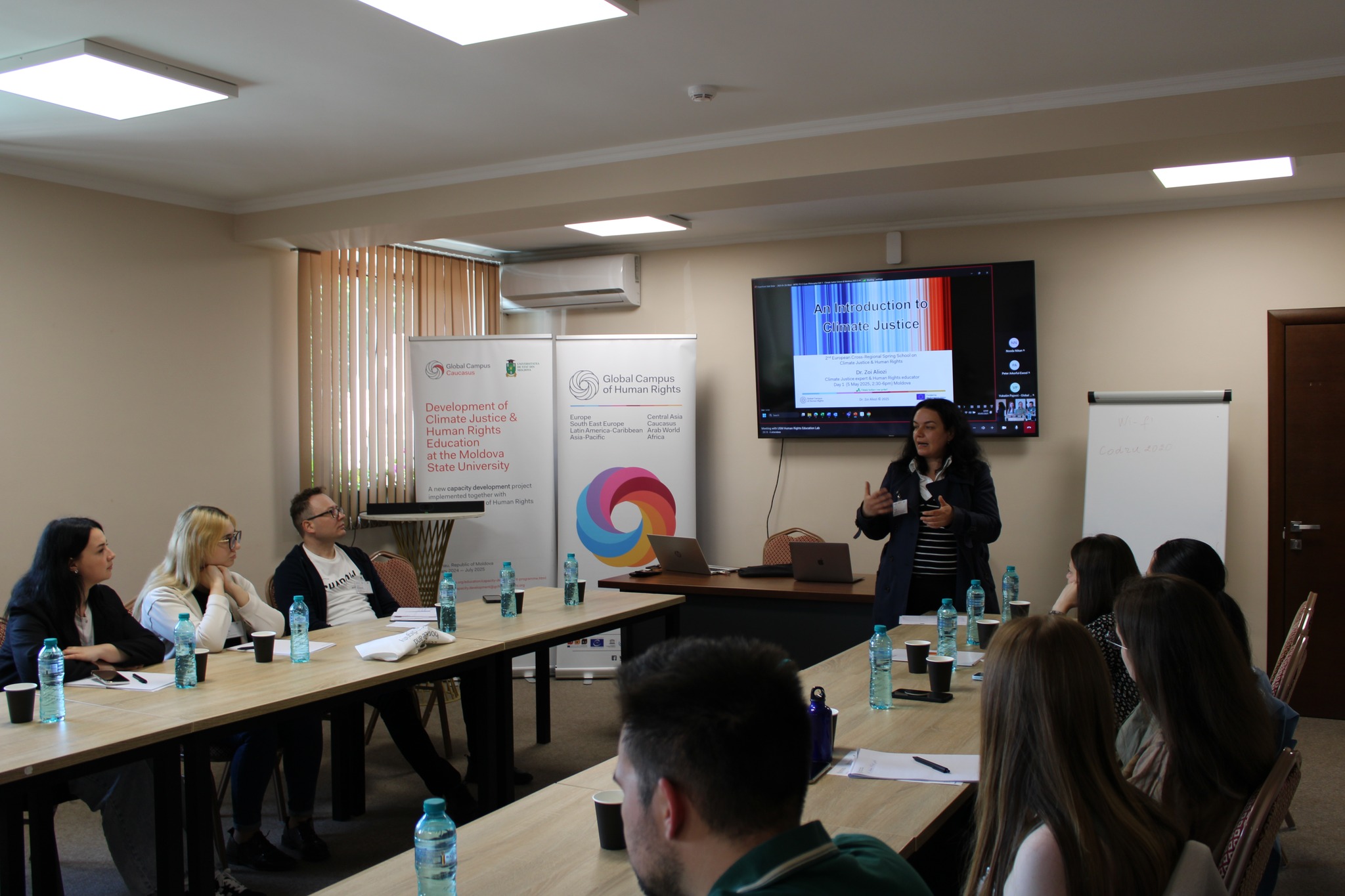Introduction: Why Link Human Rights and Climate Change?
Climate change is not only an environmental crisis — it’s a human rights crisis. Rising seas, prolonged droughts, and extreme weather events threaten fundamental rights: life, health, food, water, housing, and even self-determination.
As I noted in my Policy Brief: Climate Justice and Human Rights in a World in Climate Emergency (2021):
“We cannot speak of climate solutions without centring justice. Solutions must be as much about rights, fairness, and participation as they are about technology or emissions targets.”
By teaching human rights through the lens of climate change, we equip students, activists, and policymakers with the tools to address the justice dimension of the climate crisis.
Understanding the Connection
Climate change acts as a threat multiplier — intensifying poverty, inequality, and displacement.
- Right to Life: Threatened by disasters, heatwaves, and disease spread.
- Right to Health: Impacted by air pollution, vector-borne diseases, and water scarcity.
- Right to Housing: Undermined by flooding, storms, and desertification.
- Right to Self-Determination: Challenged when communities are forced to relocate.
In my chapter Climate Justice: Ecocide as an International Blue Crime (2025), I stress:
“Climate justice demands that those responsible for harm are held accountable, and that those affected are not left without redress.”
Why Teach This Way?
Teaching human rights through climate change achieves three goals:
- Relevance – Students see human rights in real-world contexts.
- Interdisciplinary Learning – Combines law, philosophy, political science, and environmental studies.
- Empowerment – Equips learners to advocate for systemic change.
Practical Strategies for Educators
Here’s how educators can integrate climate change into human rights teaching:
1. Case-Based Learning
Use examples such as:
- Pacific Island nations facing loss of territory due to sea-level rise.
- Climate-induced migration in Central Asia and Africa.
- Court cases recognising the right to a healthy environment.
2. Legal Framework Analysis
Discuss:
- The Paris Agreement (2015)
- The UN Framework Convention on Climate Change (1992)
- The Maastricht Principles on the Rights of Future Generations
3. Intersectional Perspectives
Incorporate gender, Indigenous rights, and environmental justice to show how climate change impacts different groups differently.
4. Role-Play & Simulations
Organise mock UN climate negotiations or human rights court hearings on climate-related cases.
For Activists and Policymakers
This approach isn’t only for classrooms — it informs advocacy and policy work. By framing climate impacts as human rights violations, we strengthen the legal and moral case for urgent action.
Key Takeaways
- Climate change must be taught not only as science but as a justice issue.
- Human rights provide a framework for equitable climate action.
- Education is a powerful tool for empowerment and advocacy.
Further Resources
- 📄 Policy Brief: Climate Justice and Human Rights in a World in Climate Emergency
- 📘 Green Criminology: A Rights-Based Approach – in Green Crimes and International Criminal Law (Vernon Press, 2021)
- 🌐 Stop Ecocide International
Work With Me
At ZA Global Academic Consultancy, I design training, curricula, and workshops that make climate justice and human rights practical, enforceable, and impactful.
📧 Contact: info@zoialiozi.com | 🌐 Visit My Website

